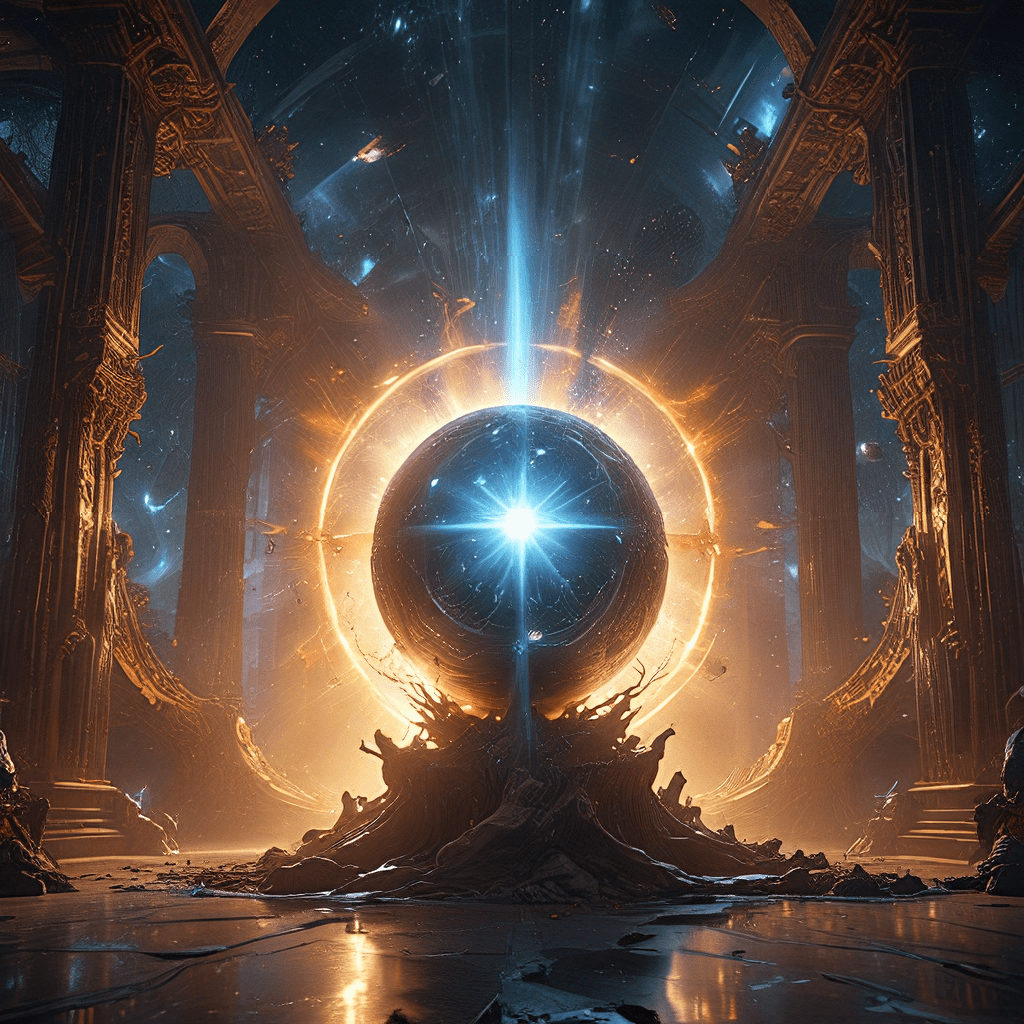## The Divine Breath: The Life Force of the Universe
1. The Concept of Breath in Ancient Traditions
From the dawn of civilization, humankind has recognized the profound connection between breath and life. Ancient cultures across the globe viewed breath as a vital force, an essence that animates the body and connects us to the divine. The Egyptians, for instance, believed that the “ka,” a spiritual double, was linked to the breath. This vital life force was seen as a bridge between the physical and spiritual realms. In ancient India, breath was considered the fundamental essence of life, a concept known as “prana.” This cosmic energy permeates all living beings and is responsible for their existence. Likewise, in ancient China, “qi” or “chi” was seen as the vital energy that flows through the body and the universe. This concept emphasizes the interconnectedness of all things, including humans and nature.
2. The Breath as a Universal Principle
The concept of breath as a life force transcends cultural boundaries. Whether it’s “prana” in India, “qi” in China, or “ruach” in Hebrew, these terms all signify a fundamental energy that sustains life and connects us to the universe. The breath is a common thread woven through various spiritual traditions, signifying the unseen energy that flows through all things. It’s a unifying principle that speaks to the inherent interconnectedness of all life. This concept highlights the understanding that we are part of a larger cosmic flow, a dance of energy that sustains and connects us to the universe.
3. The Breath as a Source of Creation
Many creation myths across cultures feature breath as the spark of life, the animating force behind the universe’s birth. In the Bible, Genesis begins with the words, “And God said, Let there be light,” and it is through the divine breath that creation begins. This act of breathing signifies the power of creation and the divine force that brings life into existence. Similarly, in Hinduism, the universe is said to have originated from the Cosmic Egg, which was breathed into life by Brahma, the creator god. The act of breathing signifies the power of creation and the divine force that brings life into existence. These stories embody the profound belief that breath is the essential force that brings life into existence.
4. The Breath in Spiritual Practices
Throughout history, spiritual traditions have emphasized the importance of breath control as a means to cultivate inner peace, enhance awareness, and connect with the divine. Practices like pranayama (India), qigong (China), and other forms of breathwork aim to regulate and direct the flow of this vital energy. By controlling the breath, individuals can influence their physical, mental, and spiritual states. These practices are often used in meditation and mindfulness exercises, allowing individuals to find inner stillness, clarity, and a deeper connection to their own being. Through conscious breathing, individuals can tap into the energy flow of the cosmos and cultivate a sense of harmony within themselves and with the universe.
5. Breath as the Bridge Between the Physical and Spiritual
The physical act of breathing is a tangible manifestation of the unseen energy that connects us to the spiritual realm. Each breath we take represents a cycle of life, a dance between inhalation and exhalation, mirroring the ebb and flow of energy both within us and in the universe. The breath is often described as a conduit for energy exchange between the body and the cosmos. In biblical narratives, “the breath of life” is often cited as the essential element that differentiates the living from the non-living. This symbolic connection emphasizes the profound relationship between the physical body and the soul, highlighting the breath as a bridge that connects them.
6. The Cosmic Breath and the Rhythm of Nature
The cyclical nature of breath is reflected in the rhythms of nature. Just as we inhale and exhale, the tide rises and falls, the seasons change, and the growth cycle of plants follows a pattern of expansion and contraction, mirroring the flow of energy in the cosmos. This interconnectedness highlights the unified rhythm of life, connecting us to the natural world through the shared language of breath. The breath is a unifying force that binds us to the greater cosmic dance.
7. Breath as a Symbol of Life and Death
The act of breathing is the defining characteristic of life, the tangible evidence that separates the living from the non-living. Our first breath marks our arrival in the world, and our last breath signifies our departure. The “last breath” holds significant meaning in various cultures, signifying the release of the soul from the body and the transition into the unknown. The breath, in its finality, becomes a symbol of the transition between life and death, a bridge between our physical existence and the mysteries beyond.
8. The Breath as a Source of Healing
Breathwork has long been recognized as a potent tool for healing and well-being. It can help to regulate the nervous system, reduce stress, and promote relaxation. By focusing on the breath, we can become more present in the moment and access a deeper sense of peace and tranquility. In ancient cultures, breathwork was used to treat a wide range of ailments, from headaches and respiratory problems to emotional distress and spiritual imbalances. Breathwork can facilitate a connection to the inner wisdom of the body, promoting a sense of balance and harmony within. The power of the breath to heal and transform extends beyond physical ailments, connecting us to a deeper sense of well-being and spiritual wholeness.




